Eco-friendly beeswax bags
Eco-friendly beeswax bags
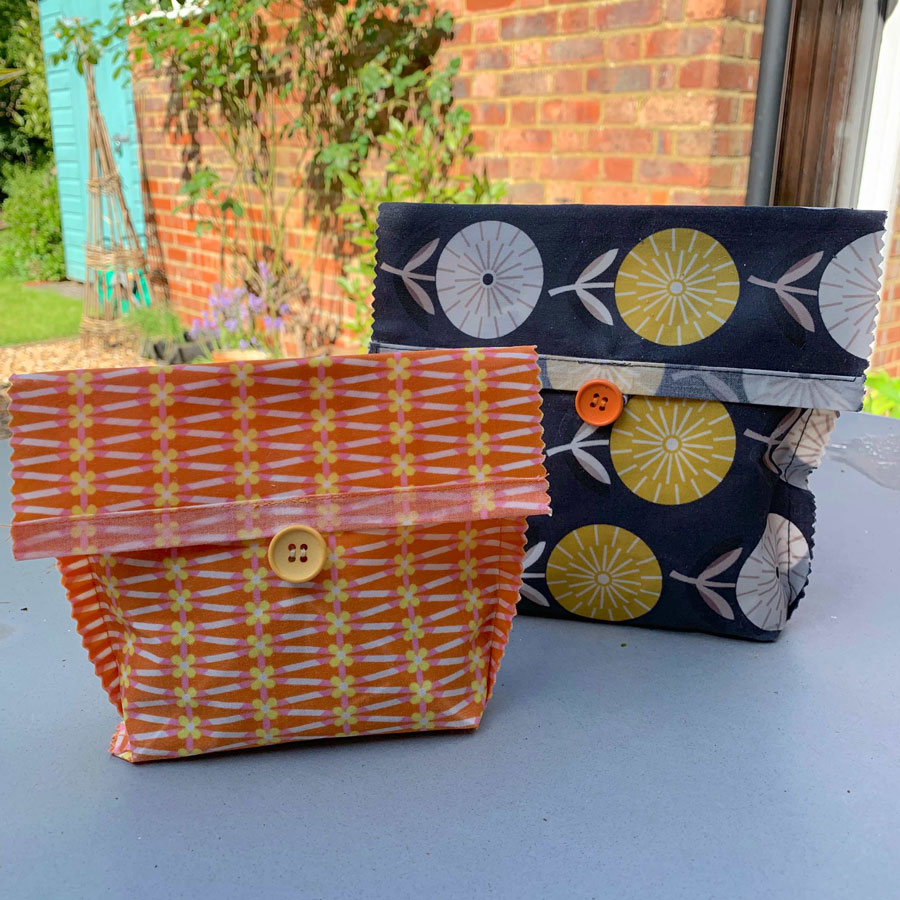
These super cute DIY beeswax bags are ideal for packing up your lunch and offer a brilliant environmentally friendly alternative to cling film, foil or plastic bags.
Skill level: Beginner
Sizing:
Small bag: Approx. 11cm wide x 12cm tall x 2.5cm deep
Medium bag: Approx. 13.5cm wide x 18cm tall x 3.5cm deep
What are beeswax bags and wraps, and why use them?
Basically, they are fabric that’s been infused with beeswax (and often other ingredients) to give them a water-resistant coating that will keep food fresh. The natural anti-bacterial properties of beeswax make them a brilliant reusable option to plastic cling film and/or foil. They can be used as covers for containers, wraps for cheese, or to wrap around fruit and vegetables, plus formed into small bags for sandwiches and snacks.
With proper care, they can last for 8-12 months and can be ‘refreshed’ for continuous life. Beeswax wraps are great in the fridge and freeze well too, but they are not airtight, so beware they are not suitable for perishable items such as raw meat. For fresh meat, longer-lasting leftovers and smellier items you would be better off using reusable glass or plastic containers.
If beeswax is so great, why add other ingredients to it?
There are so many conflicting recipes around for making beeswax wraps so we decided to test them all out and see what works best and why adding other ingredients helps them to perform better for different end uses.
Beeswax only: Using simple melted beeswax is the quickest way to create a wax infused cloth, but the end result was very stiff with none of the tackiness that makes conventional plastic wrap cling to itself. It can be used for making bags, but it did have a tendency for the wax to crack when you try to mould it so this is not our preferred option.
Beeswax and Jojoba oil: As oil is a liquid rather than a solid at room temperature, adding jojoba oil to the wax mixture, made the wraps much more pliable and therefore perfect for creating our bags. However, the fabric still does not have the tackiness to enable it to stick to itself or the side of a bowl.
Beeswax, Jojoba oil and Pine resin: By adding pine resin as well to the mixture, the fabric turns into a pliable but also tacky wrap that both clings to itself and containers. To Make your own Beeswax Wraps [click here]
IMPORTANT NOTE: Please ensure that when selecting your waxing ingredients, that you buy organic food-grade qualities, which do not contain chemicals or any nasties. These are available to buy online as individual products, or look out for specialist wax wrap kits, with all the ingredients already mixed.
To make the bags

You will need:
For bag:
- 100% cotton fabric pre-laundered to remove any finishing chemicals
- Pinking shears
- Fabric scissors
- Pins
- Matching sewing thread
- Contrasting button
- Bakers twine or fine string
- Sewing machine
- Iron
For wax mixture:
- 75gm organic cosmetic-grade beeswax pellets
- 30ml (2tbsp) organic jojoba oil
- Disposable wooden lollipop stick or similar spatula for stirring
- Old brush
- Baking parchment
- Saucepan and an old ceramic/Pyrex bowl to form a double-boiler
- Baking tray
- Wire cooling rack (optional)
For saving wax for future use:
- Silicone moulds
- Old cheese grater
- Baking parchment
For cleaning up:
- Hot soapy water
- Steel wool soap impregnated scouring pad
- Paper kitchen towel or newspaper
- Old knife
To make:
Note: All seams are formed on the outside of the bag to ensure that the inside is nice and smooth, with no tricky areas that crumbs and food can get caught in.
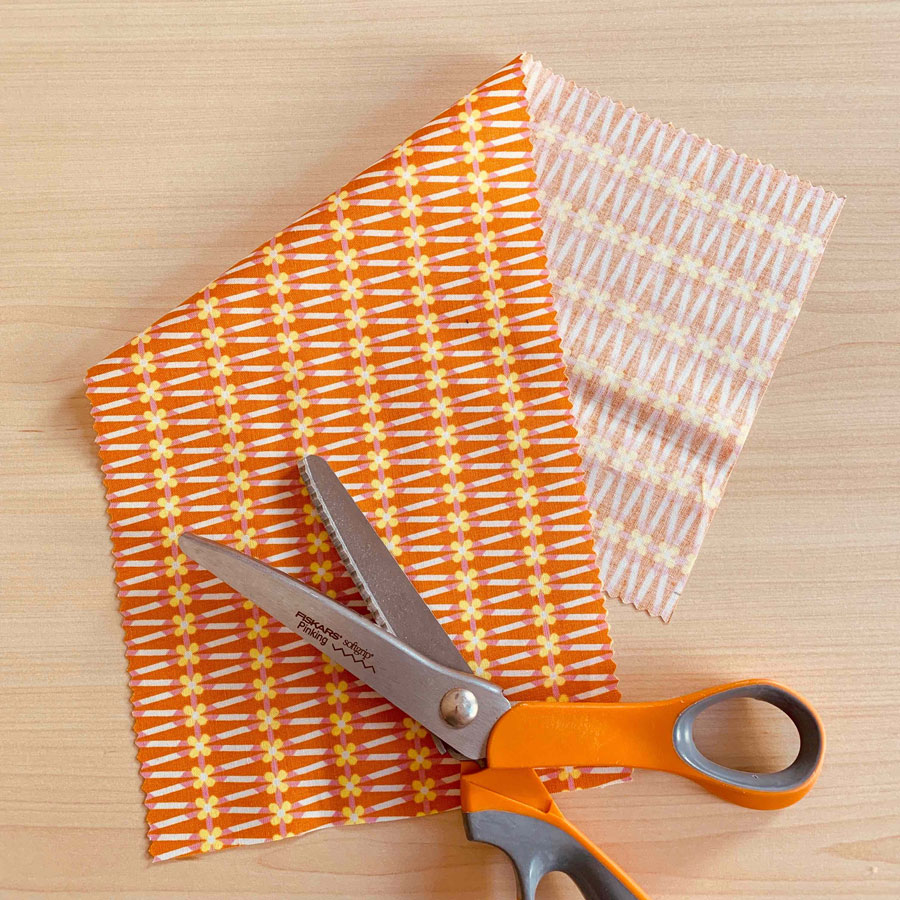
1. Cut out one fabric piece to the dimensions stated: Small: 17cm wide x 40cm long, Medium: 20cm wide x 52cm long. Use pinking shears to cut the two long sides to prevent your fabric from fraying and use normal scissors along the two shorter ends, as they will be hemmed. If you don’t own any pinking shears, don’t worry, as the wax will help to stop the edges from fraying too much anyway.
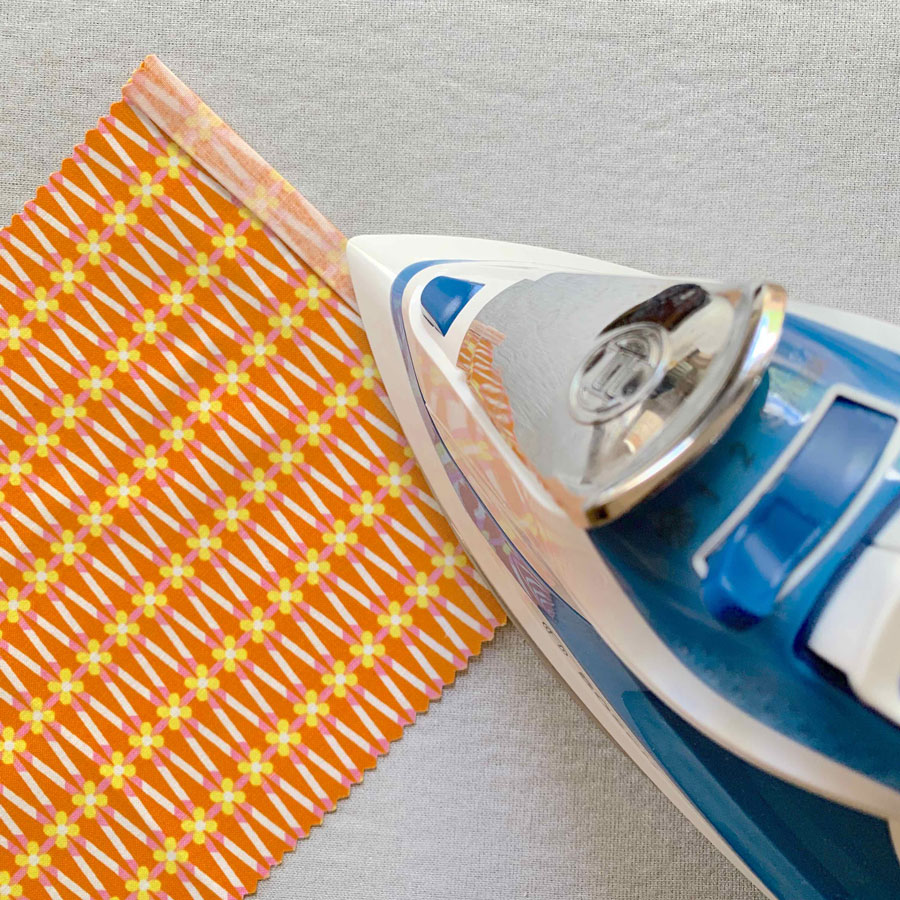
2. Press a double-turned 1cm deep hem to the right side of the fabric along both short ends.
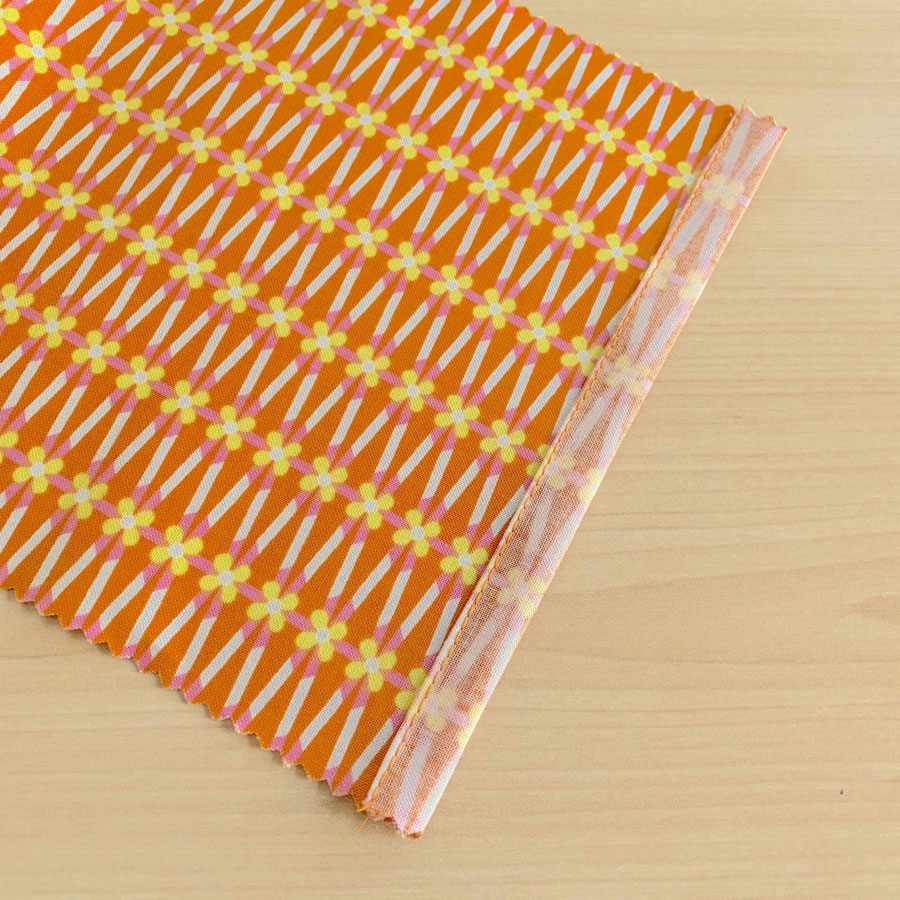
3. Machine stitch each hem in place, sewing close to the lower pressed edge.
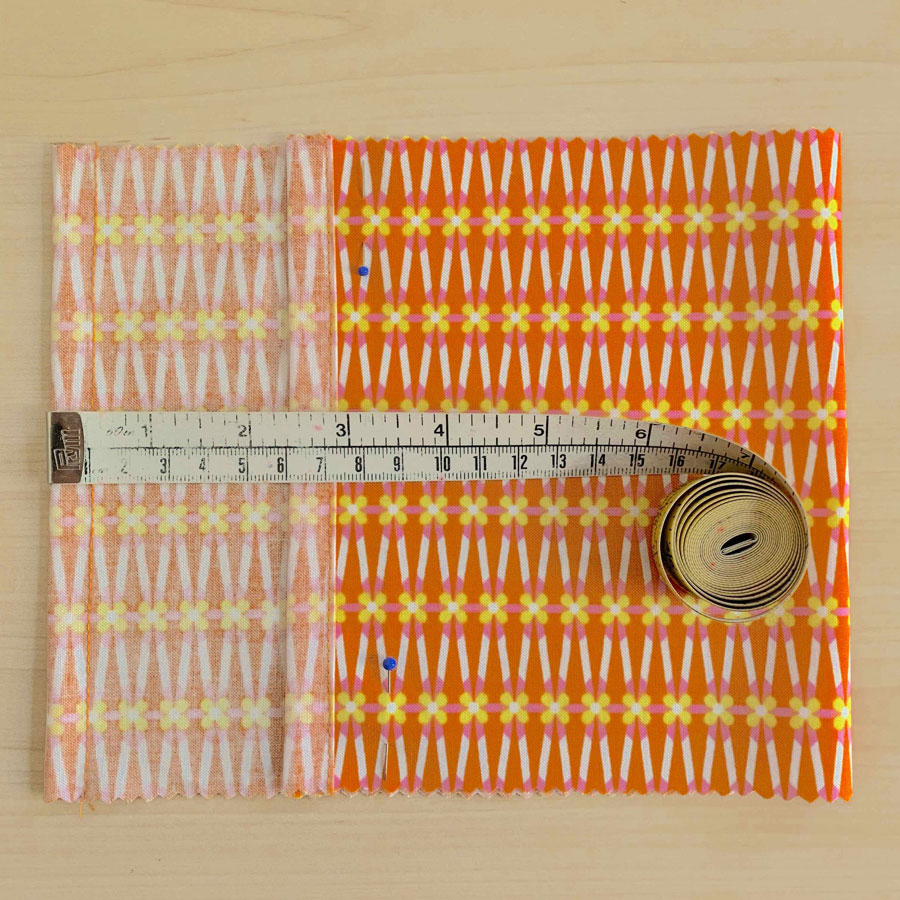
4. With wrong sides facing, fold the fabric piece in half keeping the pinked sides edges level and leaving one hemmed end extending (6cm for the small bag and 8cm for the medium bag), beyond the other to form a flap. Pin in place.
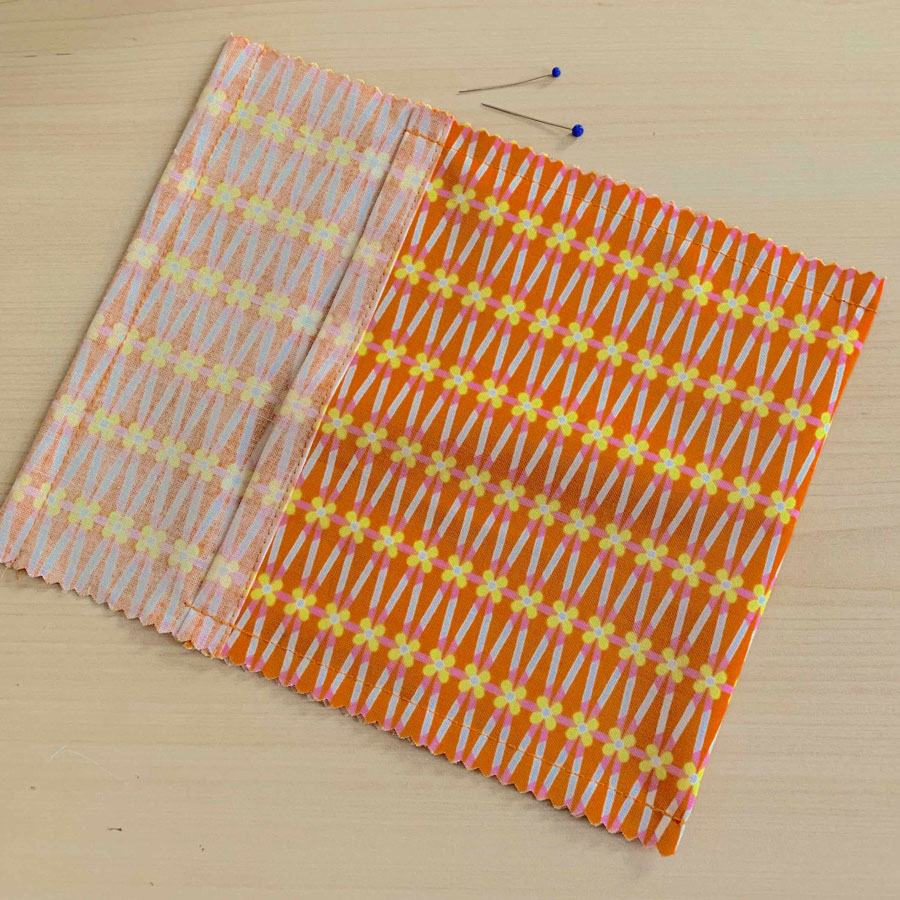
5. Taking a 1cm seam allowance, stitch each side seam together, reverse stitching at each end to secure.
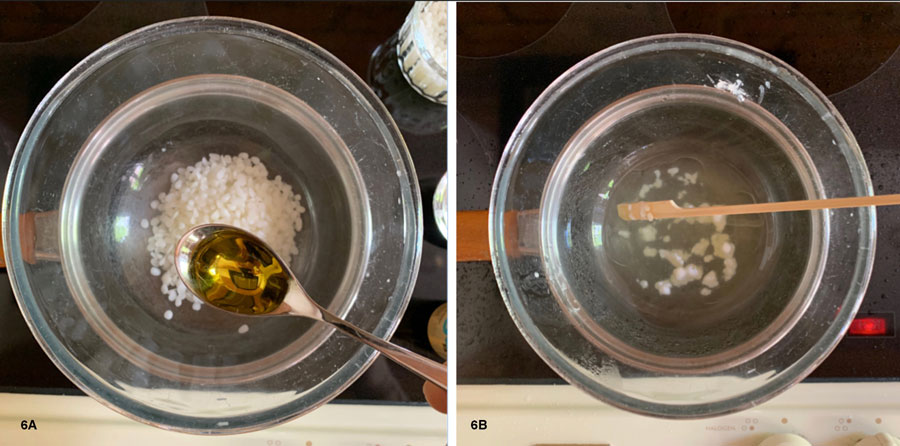
6. Add the beeswax pellets and jojoba oil to a ceramic or Pyrex bowl. Sit the bowl over a pan of simmering water and stir continuously with a wooden spatula until the wax completely melts and the two are fully combined.
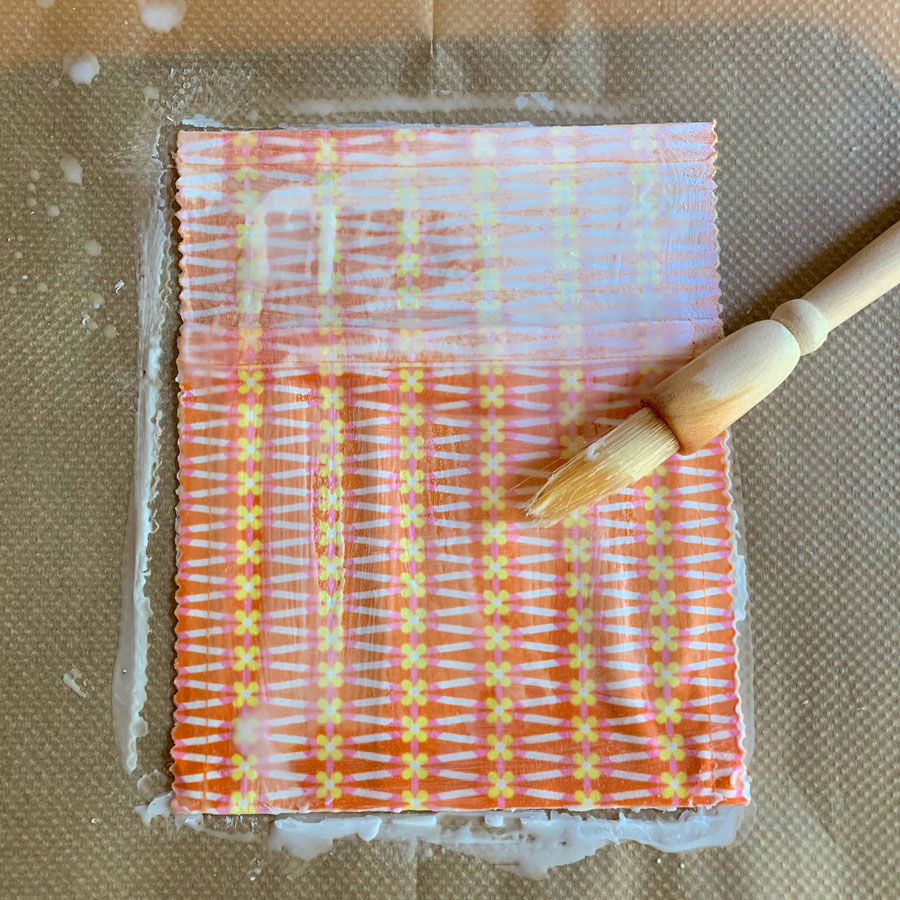
7. Cover a baking tray with a generous layer of baking parchment and lay the fabric pouch on top. Remove pan from the heat and using a brush paint molten wax mixture liberally over each side of the bag. The wax will start to set as it cools.
To save and reuse any remaining molten wax, please see directions at the base of this project.
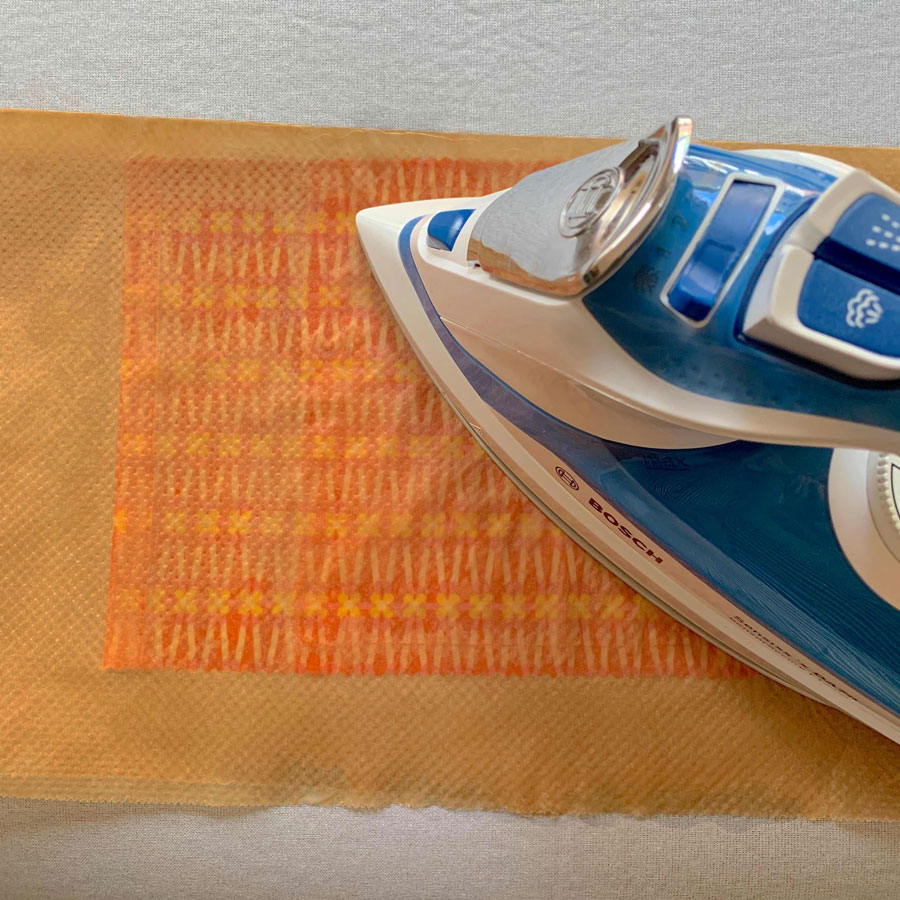
8. Place the bag between two layers of fresh baking parchment and press using a dry iron to melt the fabric wax completely into the cloth.
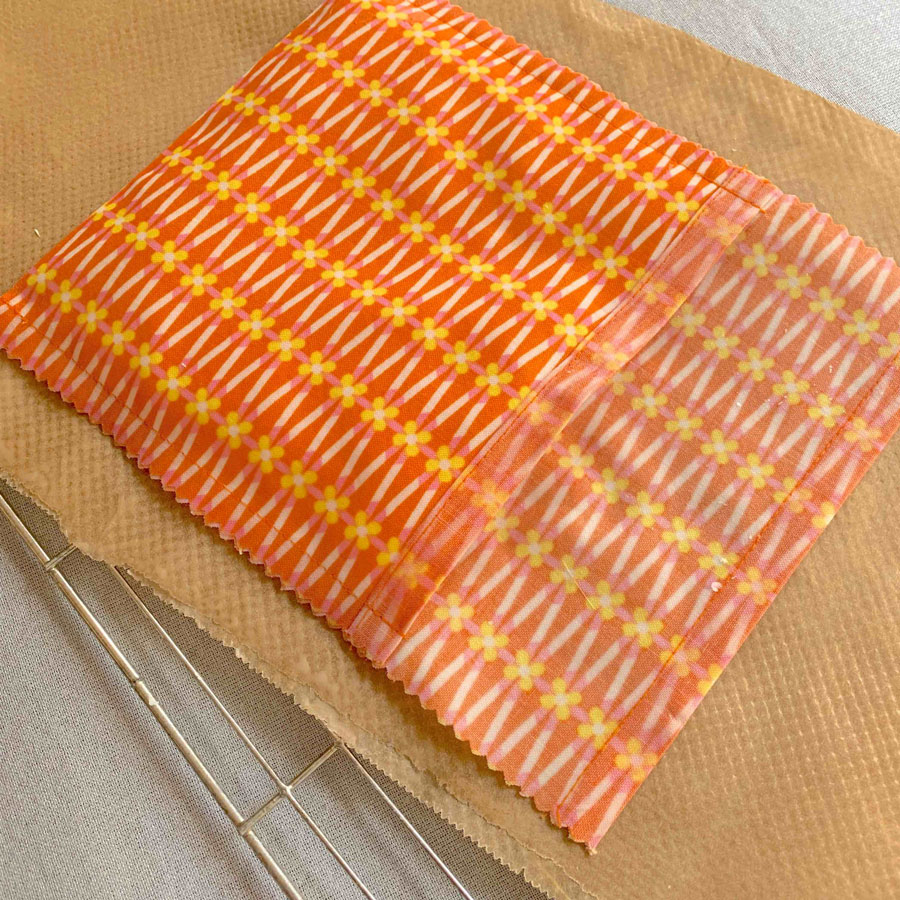
9. Remove bag from parchment and lie it on a wire cooling rack for a few minutes to let the fabric cool, alternatively waft the piece around in the air for a while. Before the bag cools completely, place your hand inside the pocket to separate the two layers.
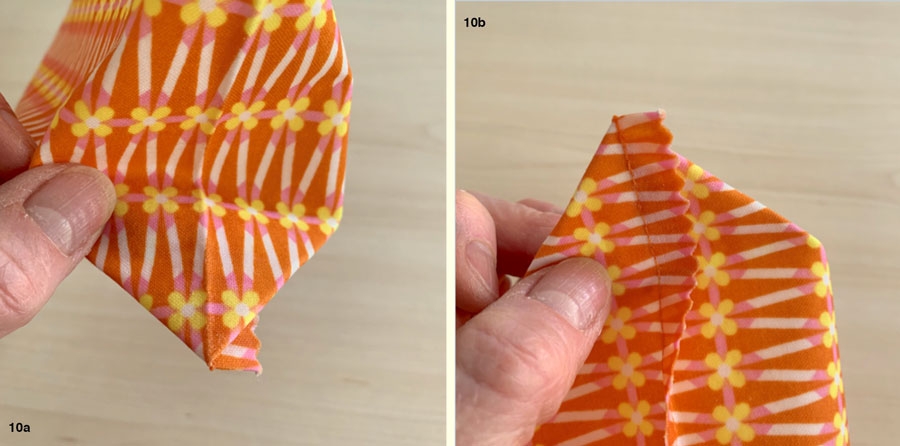
10. Now it’s time to form the bottom corners to create a flat base. Push a finger on your left hand into one corner of the bag, and with the right hand squash the side seam flat (reverse if you are left-handed), so it lies on top of the base fold line (10a), with the seam allowances facing the front of the bag, to form a pointed corner (10b).
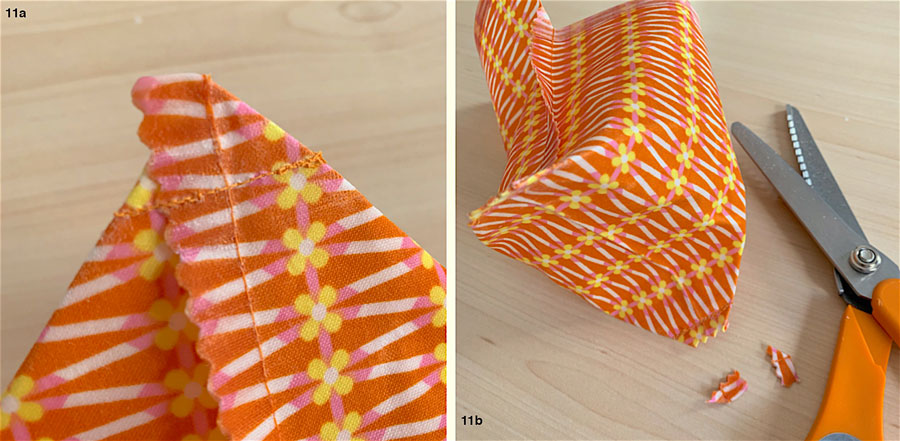
11. Machine stitch across the corners, 1.5cm from the pointed end for the small bag and 2.5cm from the end for the medium bag, reverse stitching at each end to secure (11a). Repeat steps 10 and 11 with the remaining base corner, then trim away the excess fabric with pinking shears to leave a 1cm seam allowance (11b).
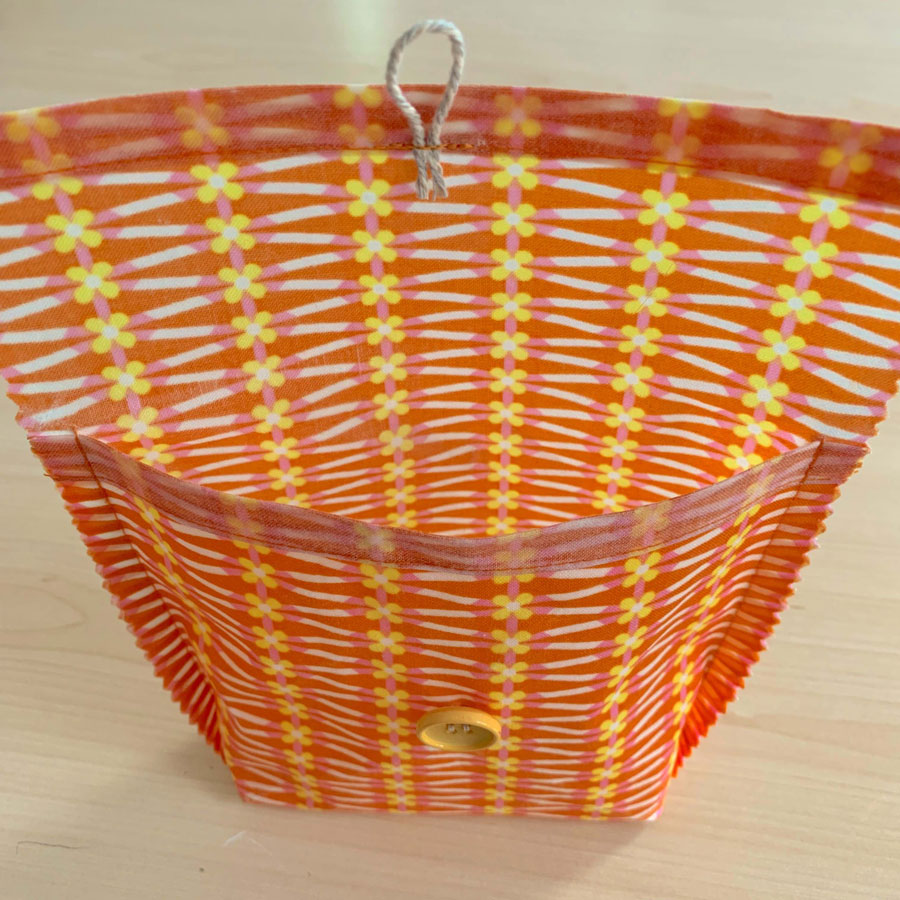
12. Sew a loop centrally to the underside of the flap and secure firmly with backstitching. Stitch a button to the front of the bag to correspond. Your bag is now ready to fill and use. To clean, rinse with cool water and mild soap and reuse them time and time again.
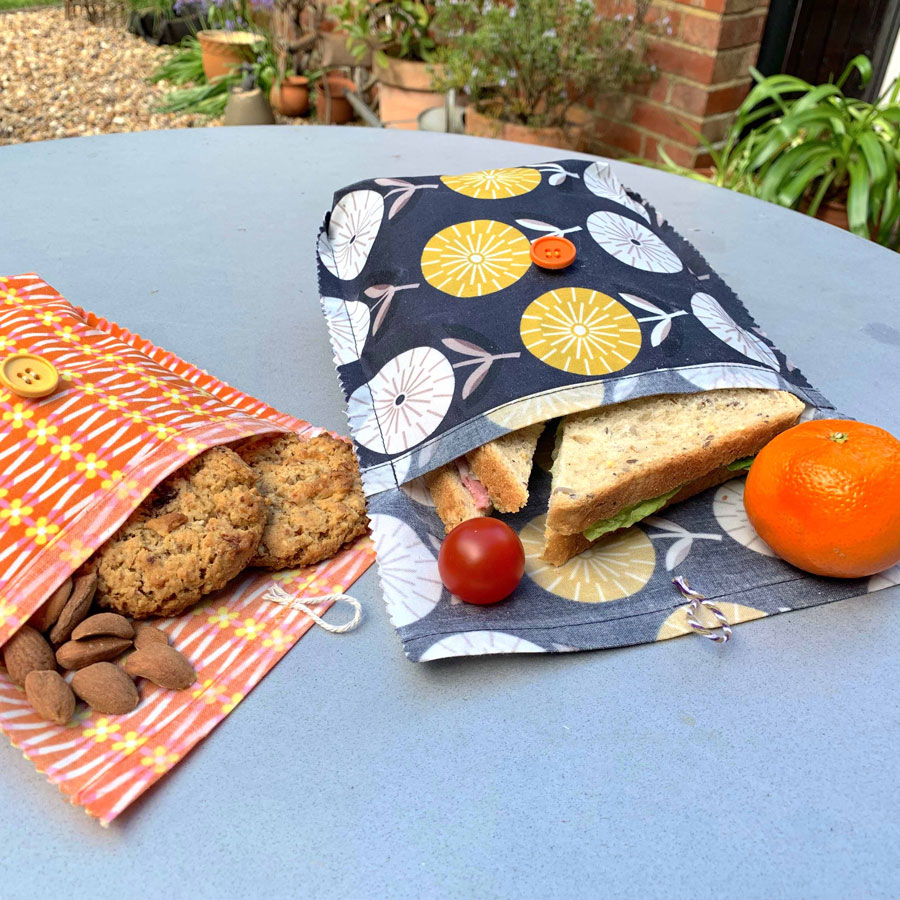
Cleaning up, saving and re-using molten wax
Rather than waste any remaining molten wax, you can save it and re-use it for future projects. Here’s how…
Saving the wax for future use
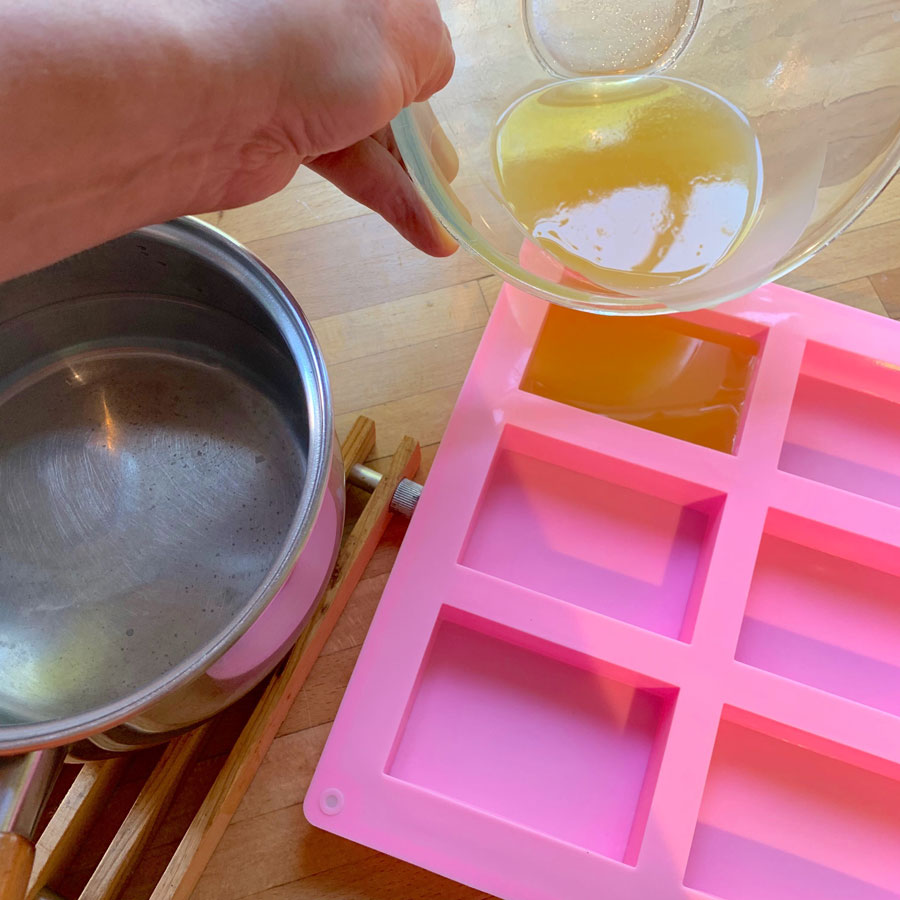
1. Simply pour the molten wax into silicone moulds.
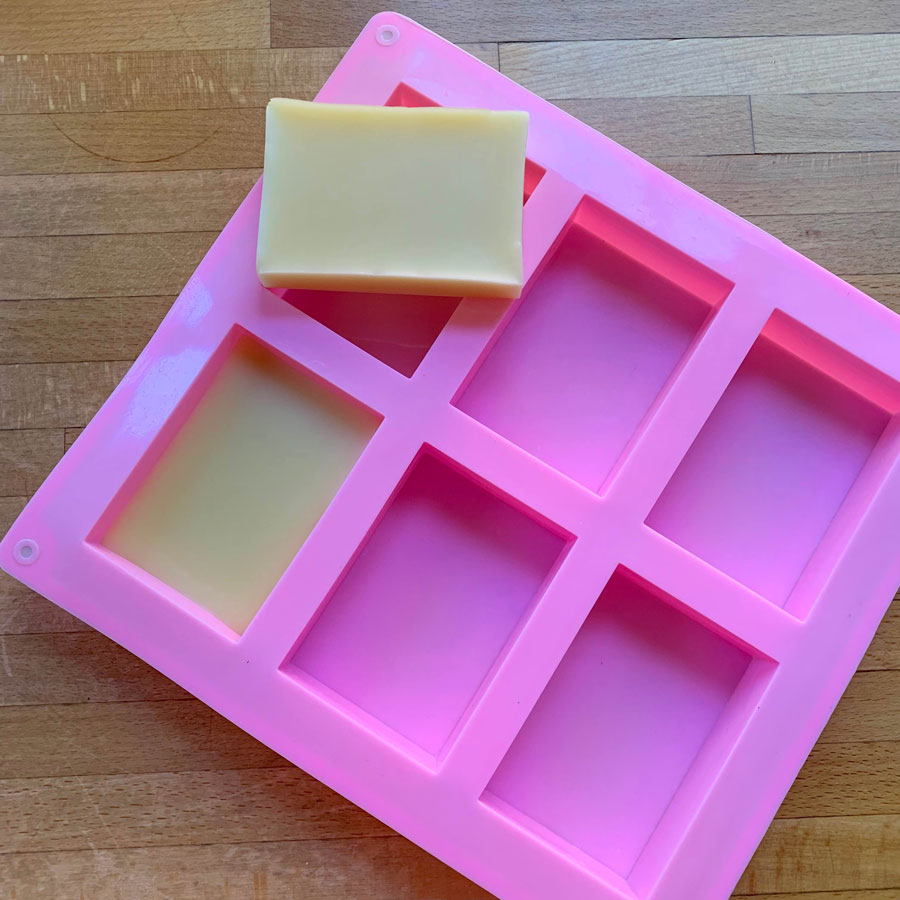
2. Leave to set over night, then pop out the individual bars.
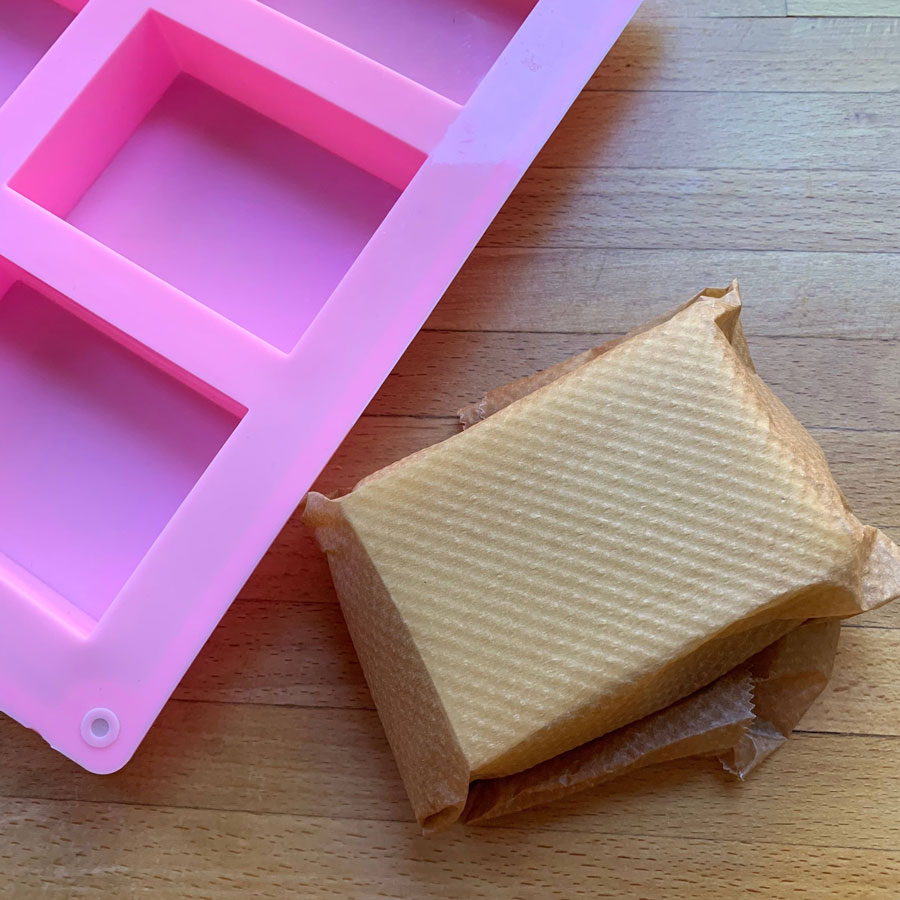
3. To keep them, wrap them in baking parchment and store. Make a note of the ingredients in your wax block and store it with the block ready for next time.
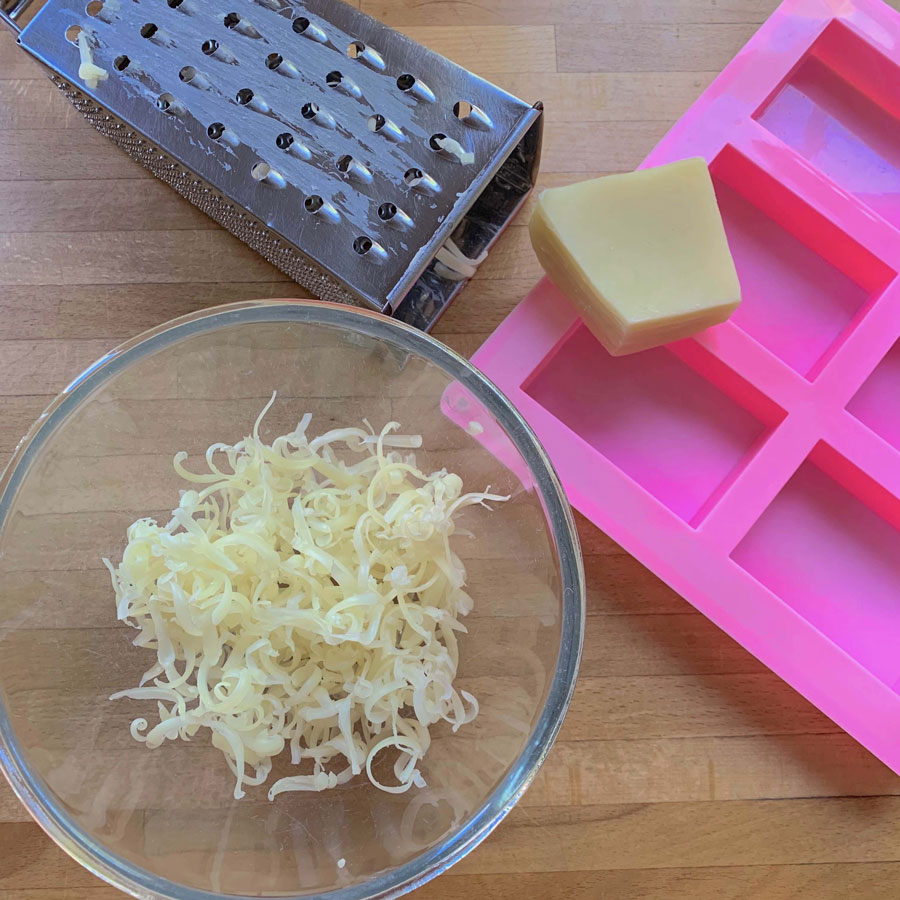
4. To re-use, grate the block into an old ceramic or Pyrex bowl and sit the bowl over a pan of simmering water stirring continuously with a disposable wooden spatula until the wax completely melts.
Cleaning up
Cleaning the utensils is not too tricky if you have just used beeswax and jojoba oil in your mixture.
1. To clean bowls and graters, first scrape off any thick excess wax mixture onto paper kitchen towel or newspaper using a knife.
2. Then, use hot soapy water and disposable steel wool soap impregnated souring pad to remove the remainder of the wax.
3. If you own a dishwasher, you can put the items through a cycle with your other pots for a final clean.
Project: Jane Bolsover, Craft Consultant, NFWI
